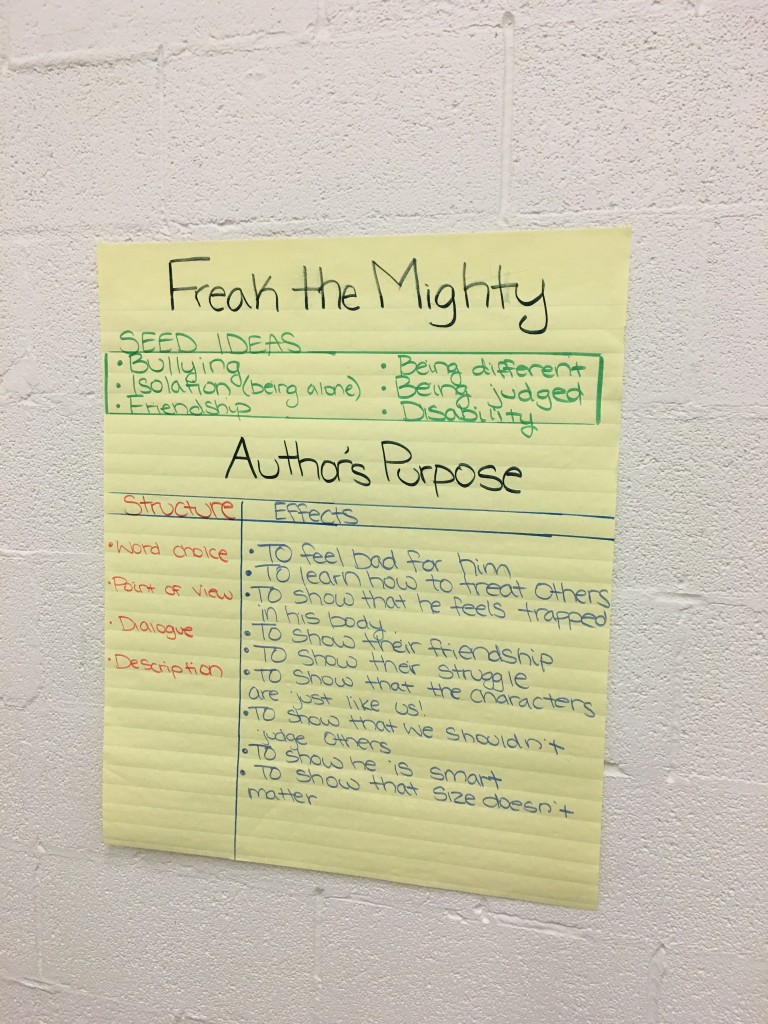I need to interrupt this regularly scheduled blog post to talk about something…odd.
Call it a coincidence, call it fate, call it noticing patterns and ‘close reading’ of the minutiae of my life.
Two days ago I chose to catch up on some podcasts, and Stuff You Missed in History Class came on featuring a teacher named Jerry Hancock. His expertise is the history of Sears in American culture, economics, etc. And while that was fascinating, what struck me was his introduction about his teaching life. He clearly says because his school is doing academically well “they” leave him alone, and he’s happiest when he can shut his door and teach. He’s a high school history teacher in Georgia, was a teacher of the year.
“As long as my door’s closed and it’s just me and my students I’m happiest.”
Working at a high-poverty school Title I school has far more benefits and rewards than drawbacks, no question about it. Over the years I’ve had the illusion at least that I have academic freedom, and because of my personal values, background, and integrity, with a hefty dose of life experience and creativity, each day I’m reminded of the gift of having a profession where I can put my talents to actual, purposeful use. And isn’t that what everyone wants? Purpose? Self-actualization? The ability to use the bathroom once in awhile? (Yes, every day is a trip up and down Maslow’s pyramid. Every. Damn. Day.)
But there is a HUGE drawback, and I’m not sure what to do about it, and quite possibly, there is nothing to be done about it.
Because as long as there is racism, sexism, poverty and standardized testing where the money to teach our students draws from its well, there will always be meetings and reflective practices about what teachers, and teachers alone, can do better. I know it’s a team effort, I know everyone has skin in the game, I know…I know…but sometimes the conversation is ambushed by ‘teacher-centered’ ideas and not student-centered, and since the two are interconnected things disconnect. The serenity prayer rocks off the rails: trying to decide what we have control over or not feels disingenuous right about now.
But I do have control over myself (to a greater or lesser degree). I do not have control how others perceive me, and that is my Achille’s Heel because I keep making the mistake of thinking I do.
The biggest cause of despair amongst myself and colleagues is the microscopic, pseudo-psychology cabal of discussing what we teachers are doing wrong because our scores are low.
We don’t want them to be. We are not trying to sabotage or destroy the process. For the most part, we are desperately seeking to support all of our students, and meet or exceed their expectations. One of my personal joys is that I am paid by their parents, by the community: I work for them, for their future. My efforts will directly affect their futures.
However when the adults are choosing, discussing, mandating, reflecting, whatever gerund you want to use, decisions must be made with surgical precision. I am wondering if there is something more insidious at stake: the gambler’s fallacy. And I wouldn’t say it’s doing the same things over again, but not recognizing when we’re trying to do something different. From my time spent getting my masters, the research-based drive is the gold standard. So we’re caught in a fixed space that’s moving, like a car or an airplane: we’re moving at hundreds of miles per hour, but stuck in our seats. The seat is the research, the will is the speed.
What if we flip the script? Instead of looking at boxes by race, gender, and special needs, what if we ask students what they think? How powerful to have a cohort of students asking and questioning what they see as the issues they face? I did such a thing a few years ago when I showed students that their data was being tracked by race and gender. Quite frankly, they were appalled. It infuriated them that their lives and education were reduced to check boxes. I think it’s time to bring back that question to my 8th graders.
It must be noted that race and gender are fixed, as least race is. With the growing awareness of transgender and gender identity gender is perhaps more fluid.




